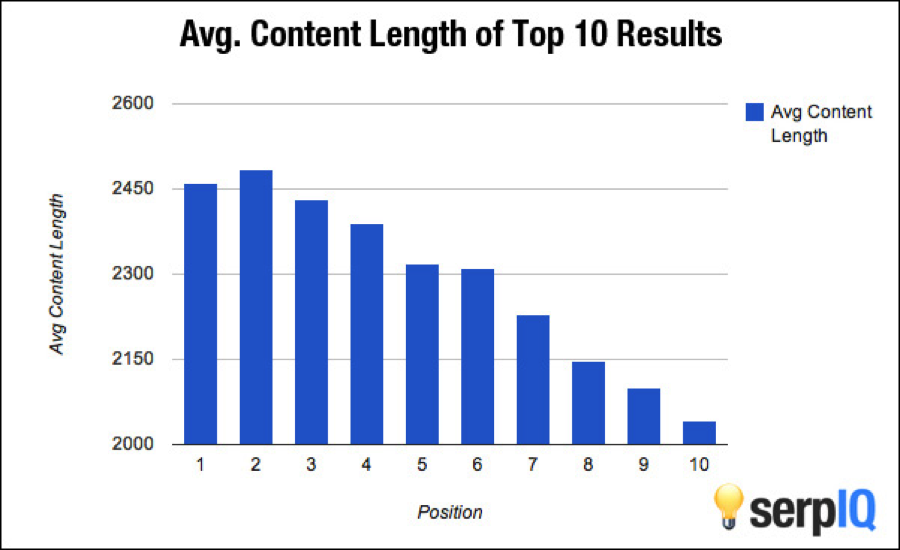 True or false:
True or false:
You should do what online marketing experts say.
Tralse? Fue? Help me. I’m looking for some middle ground.
See, online marketing is:
(A) Hard
(B) Ever-changing
(C) Continuously experimental
(D) Different for everybody
(E) All of the above
You bet your F’in’ A the answer’s (E).
Marketing changes at the speed of screen flicker
So we scour blogs and any other content we can get our retinas on, hoping to stay tuned into what’s up in digital. I trust you’re able to sniff out the obvious manure, but fear when you identify a super-duper, guru-like, thought leader, influencer, you accept everything he or she says as the gospel.
Don’t.
Read and gather. Try out the tips that sound the most promising. But please, don’t accept every popular maxim at face value.
Here are several I see often along with a much-needed reality check.
“Visuals are more important than copy.”
HubSpot gave you “19 Reasons You Should Include Visual Content in Your Marketing” with statistics including:
90% of information transmitted to the brain is visual, and visuals are processed 60,000X faster in the brain than text. (Sources: 3M Corporation and Zabisco)
The post is full of cool stats and a litany of compelling reasons to think visually. A number of experts are writing books and doing speaker tours on the subject. Interest in Instagram, Pinterest, Vine, and so on continues to soar.
We get it. Visual communication is important. People like it. It’s ultra-mobile friendly. But it doesn’t present any reason to think of a visual as a replacement for text.
Long before there was Google and blogging, we had media properties called newspapers and magazines. I wrote thousands of ads in them. Marketers made a things called brochures. I wrote thousands of those too. When we produced these types of marketing communications we used visuals and copy.
Today, I mostly write for websites. And guess what? I still use both.
I’m not saying: Don’t take advantage of visual communication.
I am saying: People are going to research your products and services by reading. If yours is a visual-first or visual-only content strategy, you will struggle to generate highly qualified traffic and convert prospects. Compelling copywriting is the key to effective marketing communications. It always will be.
“You need to blog every day.”
I can’t help but wonder if HubSpot’s the reason people adopt this strategy. As a leader in inbound marketing, HubSpot aims to present the facts. They did just that in posts such as“Companies That Blog More Have More Consistent Sales.”
The data makes a strong case for blogging frequently. It says more posts = more sales. Numerous studies since help substantiate the claim. But if you read deeper into the article, it also says, “These results don’t mean you need to blog multiple times a day to see an impact from your blog. Blogging once or twice a week is certainly better than nothing.”
I’m not saying: Don’t blog frequently.
I am saying: Don’t blog more frequently than you’re able to create high quality, educational, entertaining, and inspiring content. I submit blogging ONLY for the sake of generating traffic is likely to backfire on you. If your content is click-bait clever, but back-button lightweight, you will lose opportunities to grow your audience, feed your funnel, convert prospects to customers, and win brand advocates.
“You have to have a podcast.”
Or … you have to make videos … or SlideShares … or infographics … or have a Facebook page … or you name it.
I’m not saying: Podcasting is bad. I’m not dissing any of these content types or outlets. And I’m not saying you shouldn’t experiment with different media in an attempt to appeal to more prospects who have a great variety of media consumption preferences.
I am saying: You can’t master everything. Maybe you suck with audio content. Maybe you’re quite good, but struggle to find listeners. Don’t let the proliferation of different media and advice from those who have mastered them freak you out. Create a great blog as the cornerstone of your content marketing, and then, if resources allow, try different media and pay attention to your metrics to figure out which are working for your business.
You’re probably aware of this framework, which suggests your sharing strategy (especially for Twitter) should be mixed as such:
- 60% tweets of relevant content written by others
- 20% retweets
- 20% self-serving tweets
Me no agree. Me think while it’s okay to experiment with your social content — and even put a formula in place as a part of your experiment — you should:
- Do what you want
- Find what works for you
- Promote the hell out of your content
I’m not saying: You should forgo sharing and endorsing relevant content. It’s one of the keys to building credibility, relationships, and trust.
I am saying: If (a big “if” here) you are a source of informative and useful content, you can do your followers and your company a service by sharing it often via the media your audience favors. Personally, I share plenty of content from other sources, but share my own 2, 3, maybe 4X as often. I don’t feel any less generous or sincere in doing so. I believe I create content my followers learn from and enjoy and it’s mutually beneficial for me to promote it.
“Write short posts.”
Ugh. I’ll make this short.
I’m not saying: There’s anything wrong with short posts.
I am saying: You are dreadfully gullible if you read a tip stating, “no one has time to read anymore” and buy it. At this point in this article, you’re only halfway through a post that runs about 1700 words. Why? You’re interested. Create interesting content and it will be read.
“Write long posts.”
Ugh, part two. And here again, I’m forced to challenge some well-established experts. Research the subject of content length as it relates to Google search results and you’ll find data such as this:

As you see, all top 10 results have more than 2,000 words on the page and the sweet spot for rankings #1 and #2 are upwards of 2,450 words. Wow. That really does make a compelling case for creating copy rich pages and posts.
However, if you keep digging into serpIQ’s post from above, you’ll find there are numerous factors to consider besides length. The author concedes different niches will deliver different results, and most importantly, he writes:
“It’s never easy to figure out what Google’s up to. Algorithm changes are taking place at least twice a day and Panda and Penguin have hit some SEOs particularly hard. To truly gain expertise in the SEO field you need to be constantly testing and evaluating different strategies …”
I decided to try this out for myself. I searched “effective online marketing” (with personalized results turned off). And the winner is …
HubSpot ranked #1 with “10 Steps to Effective Online Marketing For Small Businesses,” a post that comes in under 600 words. Hmph.
#2 is “Field Guide to Effective Online Marketing,” by Realtor.org, which has a high Alexa rank, 639 global. The content of the page is almost entirely (offsite) links to other resources. (One’s a link to “21 Benefits of Business Blogging and 22 Tips,” by yours truly, hubba-hubba.)
#3 is “The Top 7 Online Marketing Trends that Will Dominate 2014,” on Forbes, Alexa rank 155 global. Note the title doesn’t match my search well. Article word count? Not even 1,500.
#4 is really interesting. Here’s why.
- It’s “The Plan to Grow Your Business – Feldman Creative.” That’s me. The actual title is “The Plan to Grow Your Business with Effective Online Marketing,” which does have the keyword phrase, but doesn’t appear on the top line of the SERP result.
- It’s not a long post or page — it’s a landing page for an ebook.
- Feldman Creative global Alexa rank: 63,150 (as of 8/2/14). Clearly, the first three results come from immensely more trafficked sites.
#5 is a relatively short post from a co.za domain (South Africa) with a very high Alexa rank.
I hope I’ve made my point. “Write long posts” is another maxim you need not take for gospel. Though you can find evidence of its merit, it took me one search to challenge it.
I’m not saying: It’s not a good idea to create informative, long-copy content. It may help with your rankings, it may earn substantial social media shares, and your readers may like it.
I am saying: Don’t allow a guideline regarding the length of your content to dictate what you do. Here’s a self-penned axiom I’ll invite you to chew on:
Great content creators don’t count characters; they make every character count.
“You need to pay for content distribution.”
If you haven’t read a post to this effect, you will soon. Some people seem to be conceding the endless barrage of content has spoiled the party. They opine that the opportunity to bake the perfect cake with content, search, and social is withering away.
Not so fast.
I’m not saying: Keep your wallet forever closed. It may make sense to throw some dollars at content distribution. Be careful though. There’s a mesmerizing array of new online advertising programs. Many sound better than they are. All too often, readers discount or distrust them.
I am saying: Paying for content is advertising. Some programs disguise this reality fairly well, but it’s still advertising. I grew up in advertising, so I won’t be first in line to dance on its grave. But it’s unwise to toss in the towel on good old organic inbound marketing. Learn how to make it work and it shall.
There’s seven new media maxims I believe too many practitioners take too literally. You may see things my way — or not. As an outspoken inbounder, I’m game for a good discussion in the interest of uncovering the answers.
Please feel free to give our readers and me your opinions and ideas.







Comments
Chuck Bartok
OK you nailed me again…..
Darn Feldman distraction, but worth the time and energy, as always.
Loved this:
” Don’t blog more frequently than you’re able to create high quality, educational, entertaining, and inspiring content. ”
and
“Create interesting content and it will be read.”
Now back to task at hand…..
Thanks, Barry
Barry Feldman
Oddly enough, I like being labeled as a distraction.
grahamkahl
Thanks Barry. Great post that challenges what’s out there. Most of the time it comes down to common sense, not a formula.
Barry Feldman
Mmm. Lots of the time, sure, but in the all digital age numbers tell us what does and doesn’t work.
Joe Gilday
I’d like to Tweet THIS: “Compelling copywriting is the key to effective marketing communications. It always will be”
Compelling
copywriting is the key to effective marketing communications. It always
will be. – See more at:
http://feldmancreative.com/2014/09/online-marketing-experts/?utm_source=feedburner&utm_medium=feed&utm_campaign=Feed%3A+FeldmanCreative+%28Feldman+Creative+-+The+Point%29#sthash.R7kQyyYS.dpuf
Compelling
copywriting is the key to effective marketing communications. It always
will be. – See more at:
http://feldmancreative.com/2014/09/online-marketing-experts/?utm_source=feedburner&utm_medium=feed&utm_campaign=Feed%3A+FeldmanCreative+%28Feldman+Creative+-+The+Point%29#sthash.R7kQyyYS.dpuf
Compelling
copywriting is the key to effective marketing communications. It always
will be. – See more at:
http://feldmancreative.com/2014/09/online-marketing-experts/?utm_source=feedburner&utm_medium=feed&utm_campaign=Feed%3A+FeldmanCreative+%28Feldman+Creative+-+The+Point%29#sthash.R7kQyyYS.dpuf
Barry Feldman
Tweet away sir Gilday. Thanks.
Chuck Bartok
Thanks again Barry for a great post. Amazing that there is really NOT one Fix for business growth and we need to understand OUR market may NOT be the same as “the Guru”
Maybe less time spent reading the How To and focus on fine tuning the Market Persona?
Barry Feldman
The persona…? Hmm. Jury says: damn good idea Chuck. I love Ann Handley’s “develop a pathological obsession with empathy.”
Cendrine Marrouat
Barry, as always, great post! I love the balanced assessments you give.
I have a monthly roundup of social media stats on my blog, and all I can say is this: There is always a study to refute another. Take everything with a pinch of salt. Focus on the needs of your audience first and foremost. Experiment!
Thank you!
Barry Feldman
Yeah, yeah, salt pinching is the recipe. Thanks Cendrine.
Beware: Online Marketing Experts Aren’t Always Right
[…] published as “Online Marketing Experts Aren’t Always Right” on Feldman Creative and republished here with […]